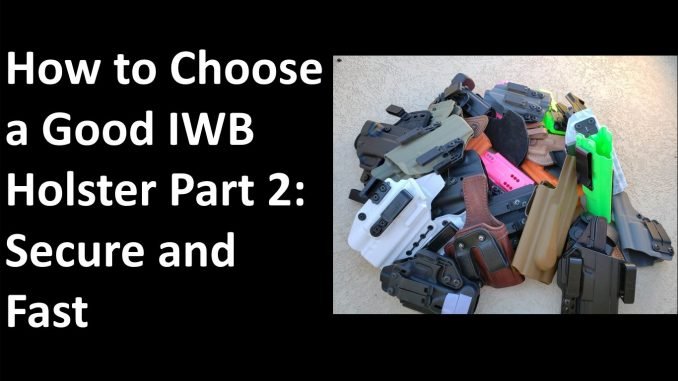
This is part two of a series where we cover what goes into a quality IWB concealment holster. If you haven’t read part one, check it out before continuing on here. Last time we covered factors to improve comfort and concealment in your conceal carry holster. Today we’ll be discussing what makes a holster secure, as well as fast. These are the last two of Tom Givens’ criteria for choosing holsters, but what exactly do those words mean?
IWB Holster Selection – Secure
This one is pretty straightforward. Our gun must be secure in the holster, and the holster must be secure on us. What features should we be looking for in a secure holster?
Retention
That means the gun shouldn’t fall out during normal, or even abnormal movements. Again, think falls, fights, and more. This doesn’t mean we need active retention, like on a Safariland ALS style duty holster. Simple friction should be enough to retain our concealed firearm.
In addition to retention organic to the holster itself, our belt and body will be sandwiching the holster between them. This adds additional pressure, further increasing friction for better retention. This is why “shake tests” aren’t always a reliable way to determine if your holster is secure. You’re missing a substantial amount of pressure by just holding the holster, which isn’t necessarily realistic.
Designed for Your Firearm
We should strictly be pairing our holsters with the gun it was specifically designed for. Just because your holster accepts a different gun than intended, doesn’t mean it fits that different gun. From time to time people will tout cross-compatibility of holsters, such as the P10C and Glock 19. This is considered a selling point for those trying to save a few bucks, but can be a recipe for disaster. Due to the differences in shape and size, this can cause excessive wear, reducing the life of our holster (which is already a disposable item).
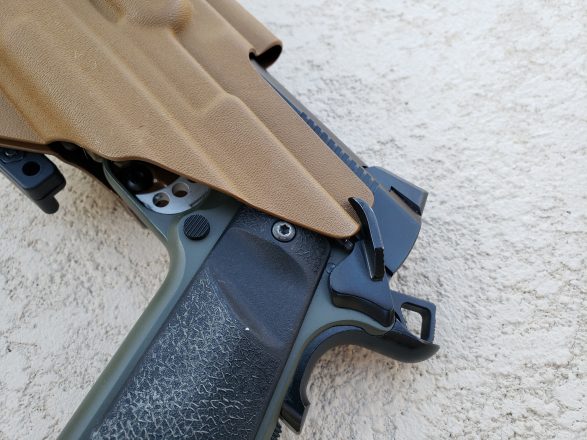
When combining dissimilar holster and gun models, the security of our gun in the holster is reduced, as the locking surfaces, whether that be passive friction on trigger guards and controls, or active locking mechanisms. This is completely contrary to our requirement for security, and could easily result in an unintentionally dumped pistol. On more than one occasion I’ve seen guns sticking out of holsters, triggers completely exposed, that wearers or gun shop employees claim is compatible. Additionally, the holster itself may interact with control surfaces it wasn’t intended to be compatible with. On certain pistols, this can cause a serious safety concern.
Trigger Protection
Another thing to consider is protection of the trigger. The obvious thing we’re looking to avoid is people sticking their fingers into the holster and firing the gun against our will, whether accidentally or otherwise. We must also be wary of shirt tails, drawstrings, spent brass, and other debris entering the holster then doing the same.
To avoid this, we need our holster to be tight around the trigger guard to ensure nothing can interact with the trigger itself. Light bearing holsters will often be more open to accommodate the wider body of the light. In this case the wearer needs to exercise even greater caution. Typically these holsters are tight enough to prevent access of adult size fingers, but awareness must be maintained.
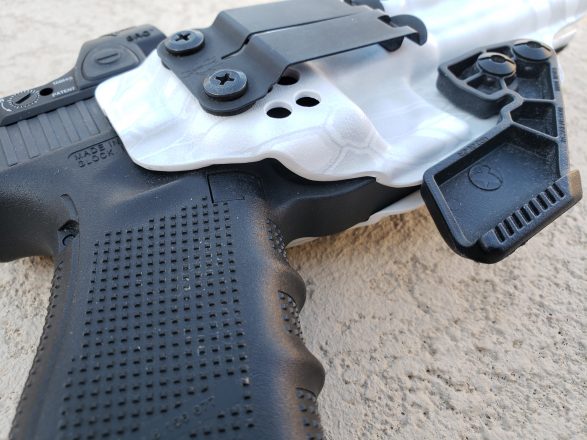
Of course we still have a duty to visually inspect our holster for debris prior to inserting our pistol. The ability to blindly holster our gun can be useful, and is something we should be capable of. That being said, if we as conceal carriers are putting the gun away, it likely means that we no longer need it. With this in mind, a quick glance at the holster, ensuring it is clear for our gun, is critical to avoid any unintentional discharges. We don’t want to accidentally crank a round into ourselves because we failed to take a moment to clear the holster.
IWB Holster Selection – Fast
The surreptitious draw is an important skill to master, and is often more critical than a rapid draw. However, being able to quickly and efficiently deploy our pistol is of great importance. Whether it’s being instantly put into play, or being prepared for events unfolding before us. Nothing about the holster should impede our ability to rapidly draw our handgun, with one or both hands.
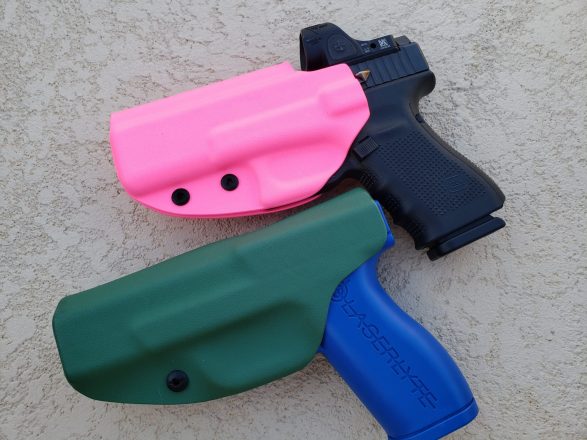
This means no excess material to block our grasp. No convoluted means of defeating retention if we’ve chosen to go that route. A properly formed holster should allow a full firing grip in the holster, that way no adjustments have to be made as part of the drawstroke.
IWB Holster Selection Parting Thoughts
The secure and fast aspects of holster design are more straightforward than some others. However, people often find their holsters lacking in these areas. While we’ve wrapped up all of Tom’s primary criteria, there’s still more to look for. Next we’ll be going into some less common considerations for concealment holsters. You can read Part Three here.
Support My Work
If you made it this far, thanks for reading! Writing isn’t my full-time profession, and nearly everything I do comes out of my own pocket. Between ammunition, tuition, range fees and more, expenses add up fast. If you like what I have to offer, consider making a donation to my Patreon.
Every bit helps bring more work like this to you, and contributes to shortened timelines or more in-depth work on my part. You’ll also have more direct access to me, offering suggestions for future projects, looking behind the scenes, and getting early access to some content. You can find my Patreon >>HERE<<


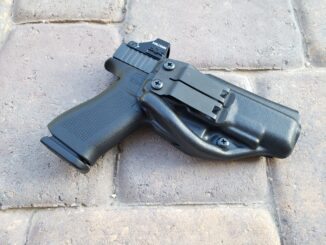


Be the first to comment